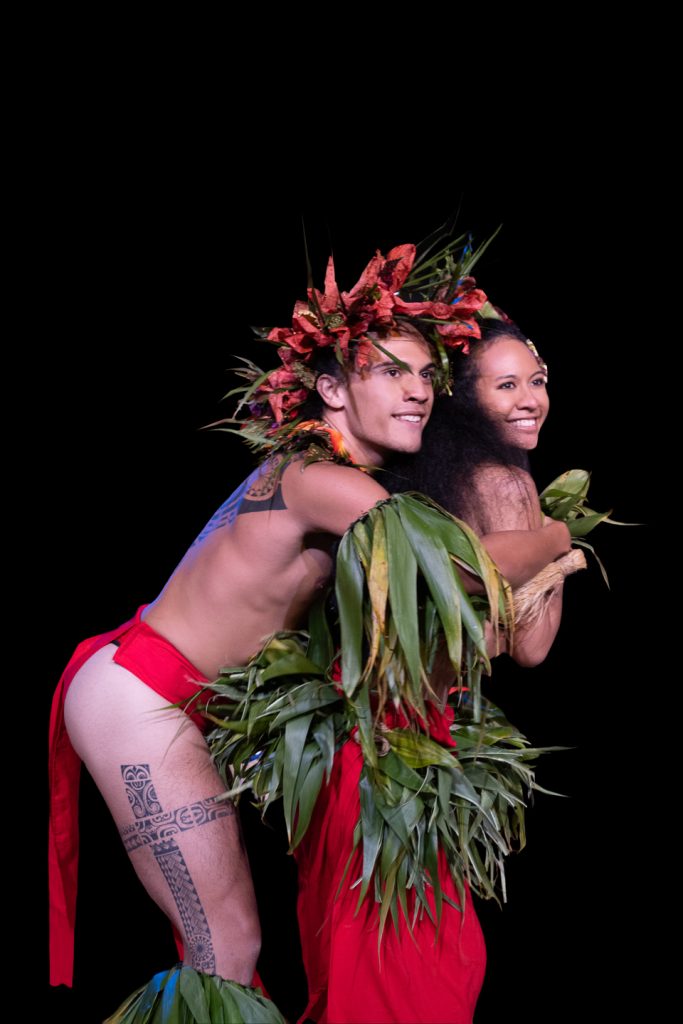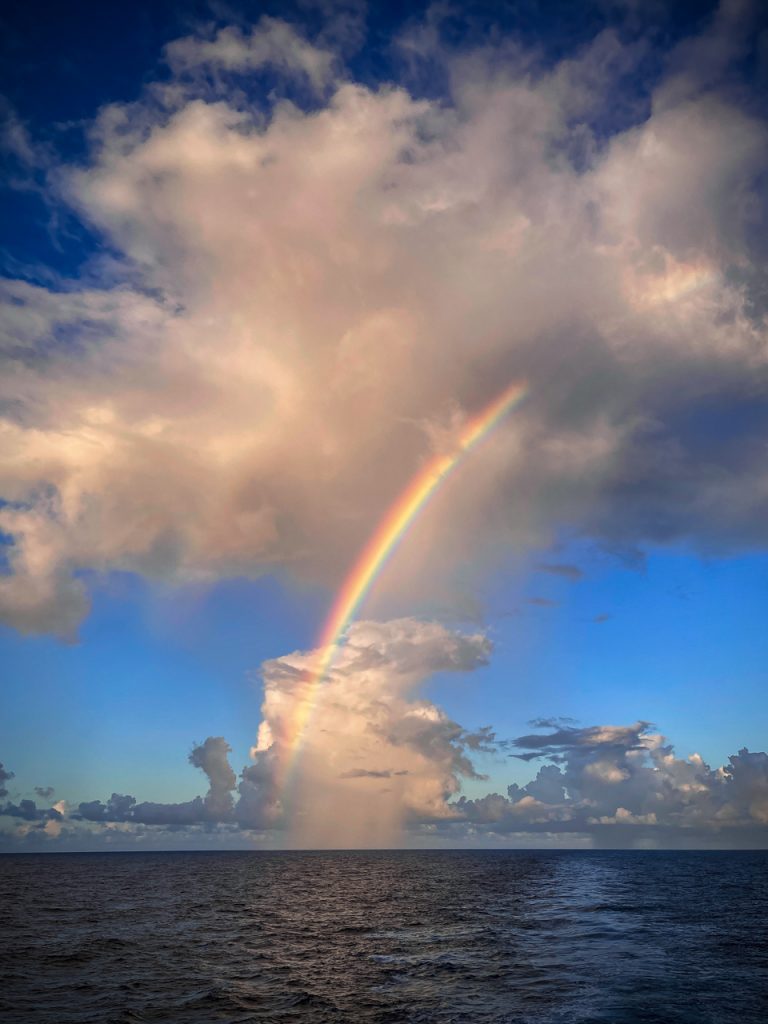
James Michener wrote in his Pulitzer Prize-winning book, Tales of the South Pacific (1947), “I wish I could tell you about the South Pacific. The way it actually was. The endless ocean. The infinite specks of coral we called islands. Coconut palms nodding gracefully towards the ocean. Reefs upon which waves broke into spray, and inner lagoons, lovely beyond description.”
At a young age, we read Michener’s book as well as Thor Heyerdahl’s Kon-Tiki and Fatu Hiva, Herman Melville’s Typee, and Nordhoff and Hall’s Mutiny on the Bounty. As a result, we dreamed for years of visiting French Polynesia, five island archipelagos located midway between California and New Zealand that, for many Westerners, offer the ultimate escape. We worried, however, that, before we could make the long journey, the culture of these islands might be threatened by development.
The question was always “how” but never “if” we’d make a visit. Should we become stowaways on a freighter, convince the skipper of a yacht to take us on as crew—or find another way to get there?
The answer became obvious when we discovered the Paul Gauguin— the only small cruise ship offering year-round voyages in French Polynesia. The ship’s casual, elegant ambience, variety of land excursions and emphasis on cultural immersion are unsurpassed. Finally, in 2013, we made our first visit.
Now, some 50 years after our original childhood dreams, we’ve just returned from French Polynesia for a third time on the Paul Gauguin. We can report that the islands’ beauty is still “lovely beyond description.” And we’ve found that Polynesians have carefully preserved their cultural traditions in music, dance and art.

On this third trip, we decided to add a different kind of adventure to Paul Gauguin’s land excursions and travel “off the grid” on our own with locals. Our objective was to meet a special couple who have marched to their own drummer and settled in the remote village of Hakaui on the Marquesan Island of Nuku Hiva.
First, some background. You may recall from an earlier post our enthusiastic review of Ana Bakran’s book, What’s Wrong With You? A successful, but restless, 31-year-old businesswoman who founded her own digital marketing company, she was determined to see the world first-hand. She set out on an extraordinary adventure during which she hitchhiked from Croatia to Polynesia, where she ultimately settled happily.
Her epic story offers many life lessons which Ana shares throughout the book: follow your dreams, ignore naysayers, detach from social media and connect in person with people of all cultures. In fact, we think her book is timely and could be a hit feature-length movie.
We were determined to finally meet the Croatian author and her Polynesian artist husband, Tangy (website: cannibal-art.com), who live in the remote village of Hakaui on the southern coast of the Marquesan island of Nuku Hiva. (We’d previously purchased several of Tangy’s hand-carved walnut tikis from the couple’s website.)
Since there were no roads to Hakaui, we hired a small motorboat to take us up the coast from Taiohae, where our ship was anchored. (This seemed risky, since there are no cell phone and internet connections in Hakaui.) A stiff wind and rough seas made for a bumpy, back-bruising ride. Large waves crashed on the rocky coastline near us. A half hour later, we made a wet landing near a small beach where Ana and Tanguy welcomed us with smiles and warm hugs.
Tangy (whose half-tattooed face we instantly recognized) and Ana helped us along an uneven and slippery path full of boulders and tangled tree roots to a clearing where we looked out on a primordial landscape: a serpentine river leading into a lush jungle, and, in the distance, a wall of mountains with the tallest waterfall in Polynesia.

We thought of Joseph Conrad’s short story Heart of Darkness: ”It was like traveling back to the earliest beginnings of the world when vegetation rioted on the earth and the big trees were kings. An empty stream, an impenetrable forest, a great silence.”
In the clearing, we conversed for a while but didn’t have time to linger, since we were on a deadline. But the meeting was long enough to re-enforce impressions gleaned from Ana’s book, that she and Tangy are very special people—a warm, caring and talented couple marching to their own drummer.
The motorboat ride back to the Paul Gauguin was a rodeo, with stronger winds and even higher waves. Then the boat’s alarm sounded. Our Marquesan boatman, who looked worried but said nothing, stopped the engine and tried several times to restart it. We waited patiently in silence, unable to communicate with him in English. Finally, after many attempts during what seemed like an eternity, he revived the motor, much to our relief!
We made it back to Taiohae safely—just in time for a nerve-steadying Mai Tai!
Now we’ve come full circle. Our childhood dreams of traveling to the South Pacific have been fulfilled more than once. Those blurry images of distant mountains, jungles and palm-lined lagoons in our dreams can now be filled in with details. We just didn’t know it would take so long.


We have seen the volcanic mountains overlooking quiet lagoons and jungles. We’ve witnessed the unsurpassed Pacific Ocean sunrises, sunsets and rainbows that add to a beauty that is, as author Eugene Burdick penned, ”vivid to the point of disbelief.” We’ve been diving in seas full of rainbow-colored fish. And our spirits have been uplifted many times by the joyful dancing and singing that Polynesians perform to celebrate their culture and welcome visitors.

Much like Ana Bakran, we pursued our dreams relentlessly and succeeded in making them an unforgettable reality.
This story is about traveling off the grid in Polynesia to the hidden Hakaui Valley in the Marquesas Archipelago.
